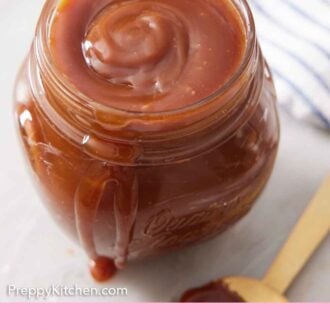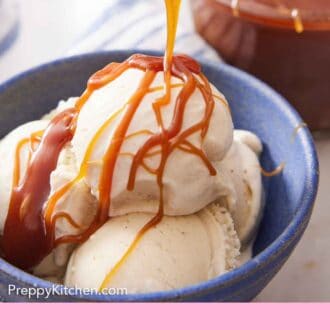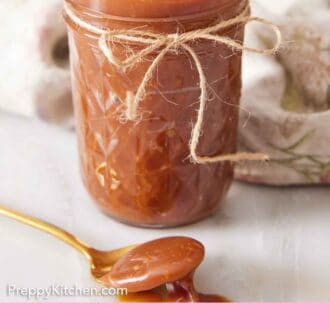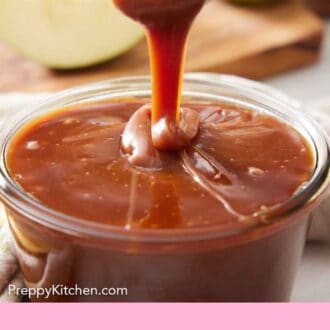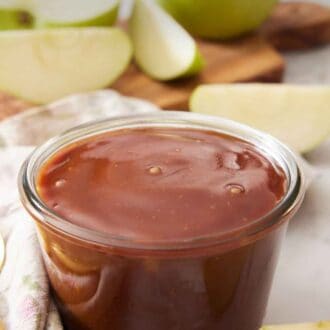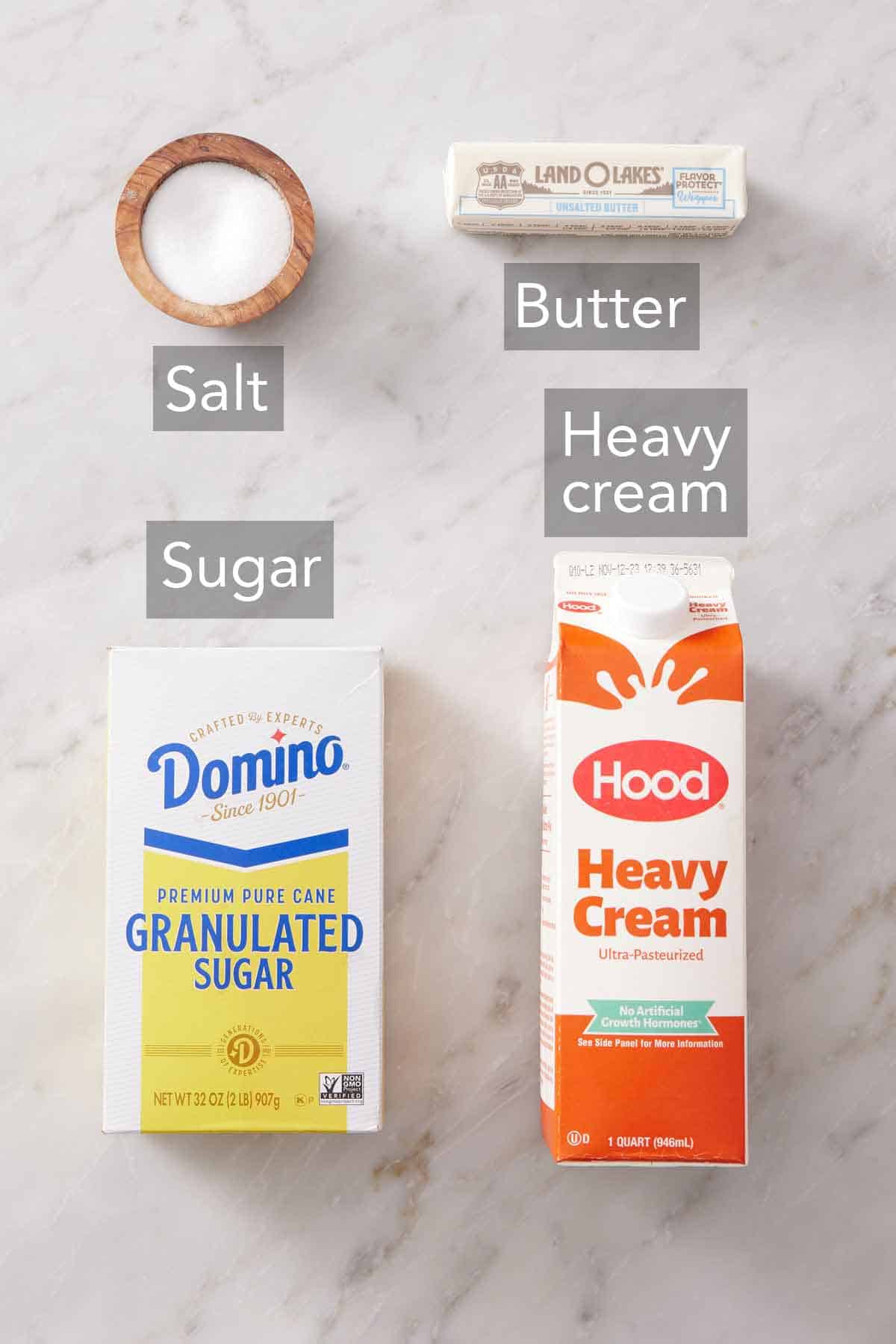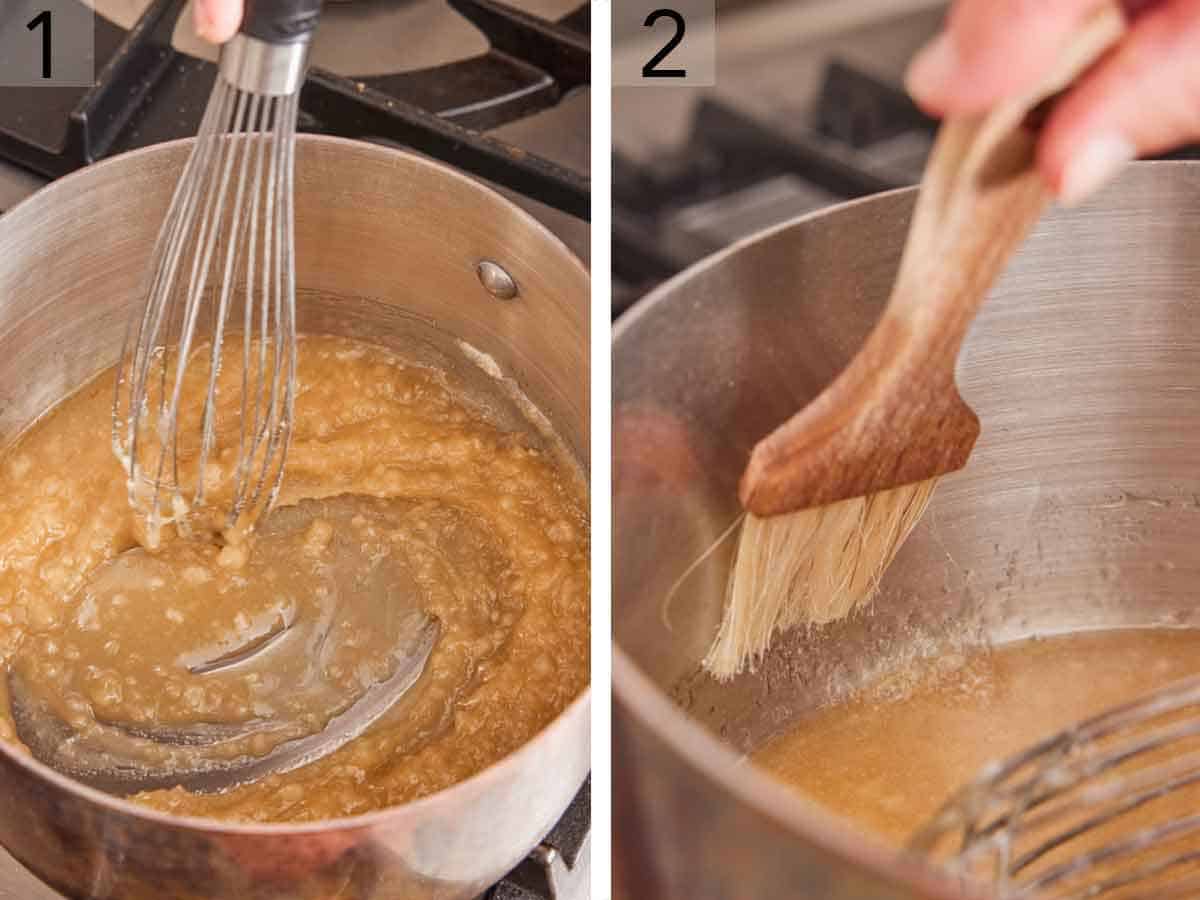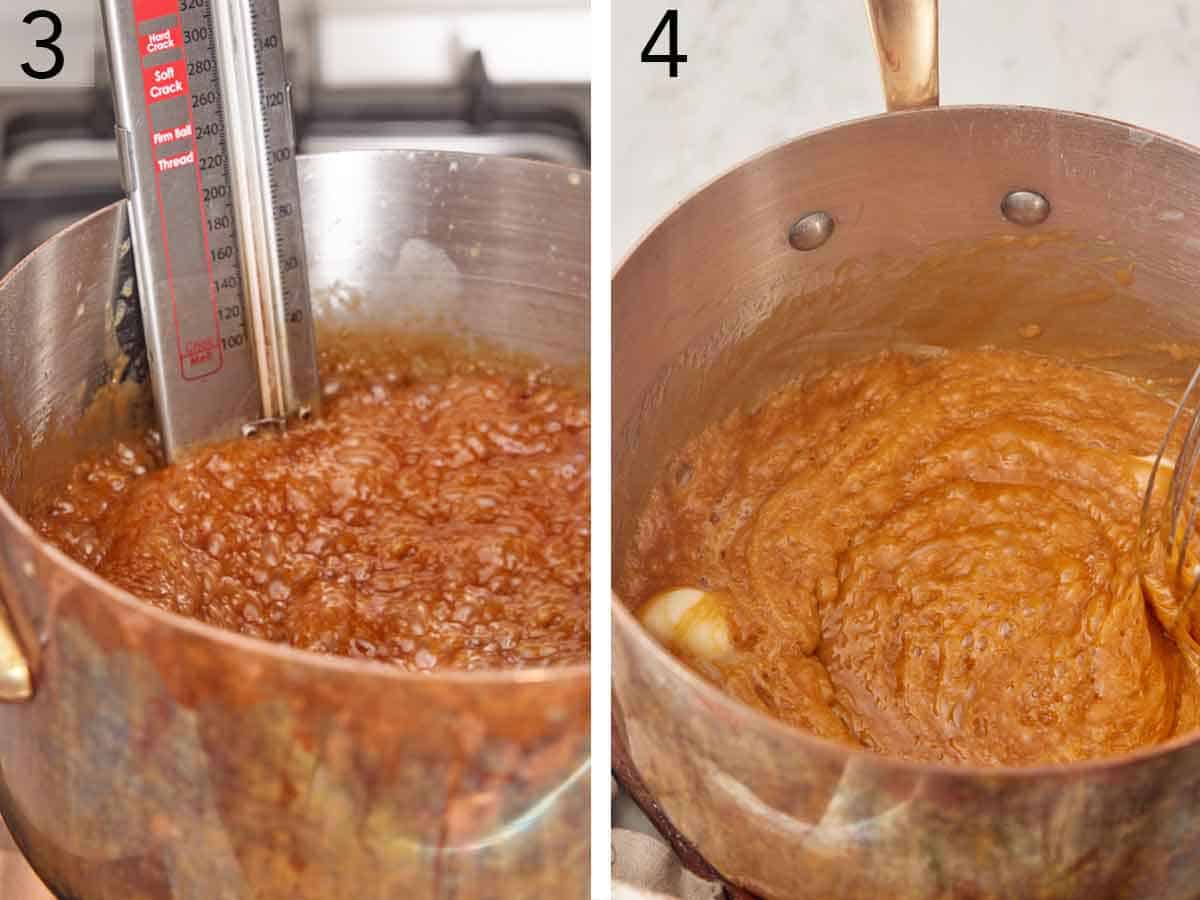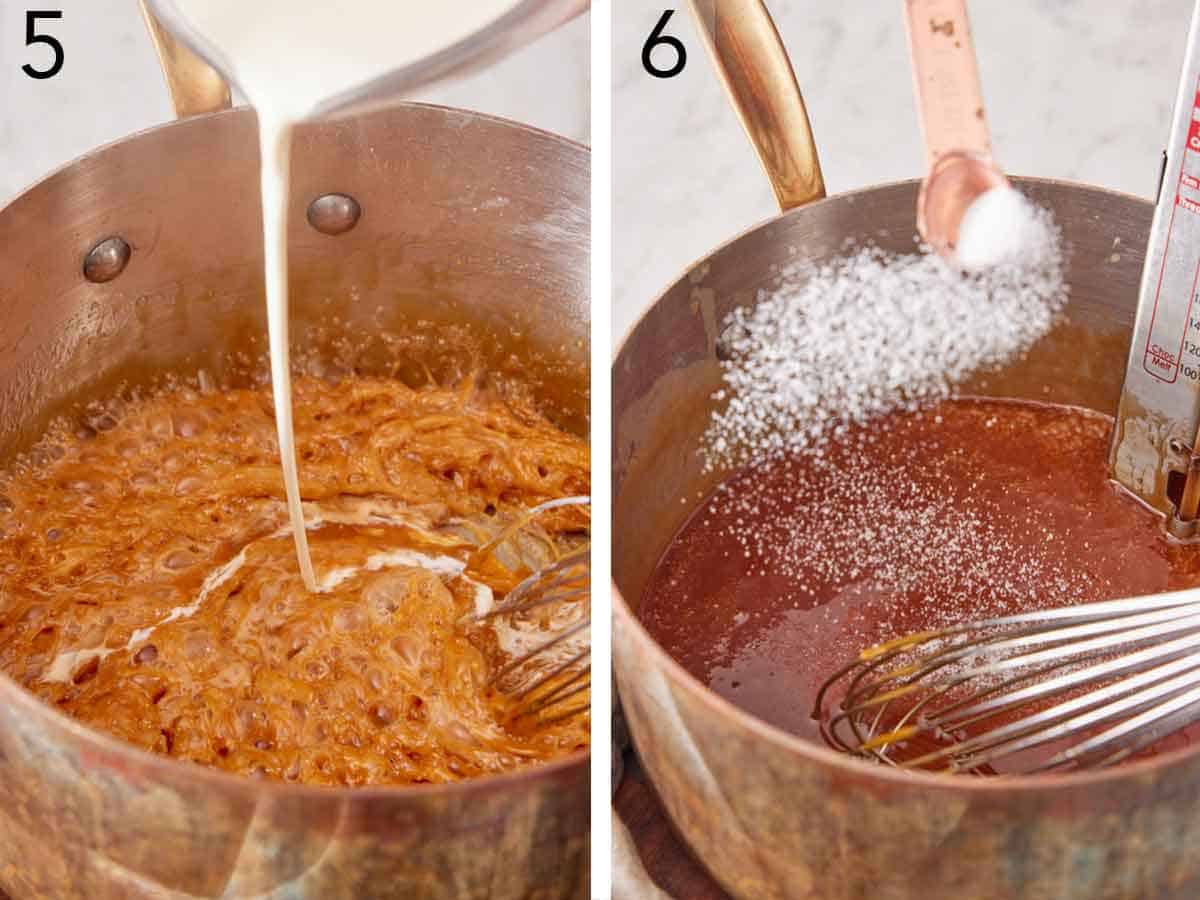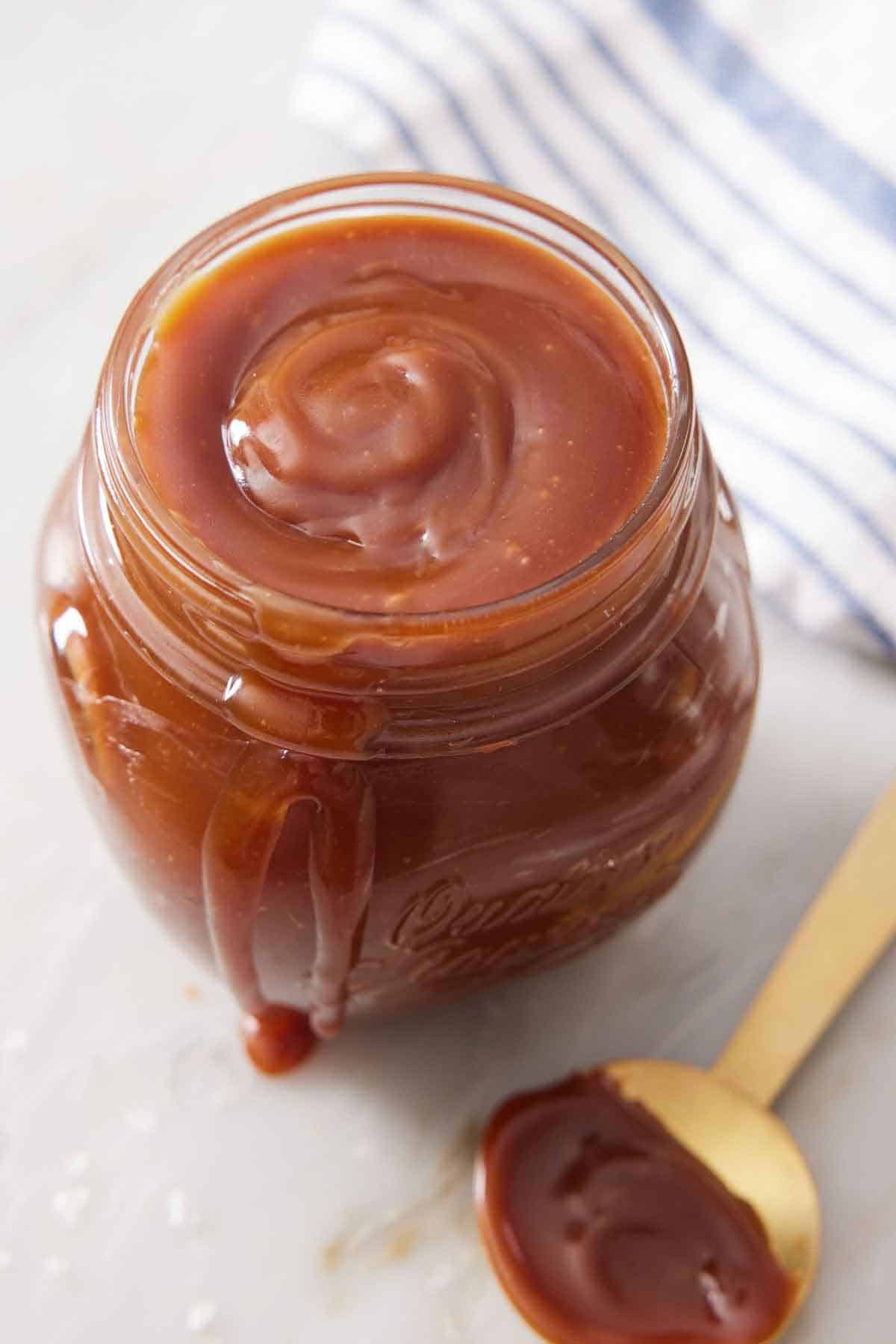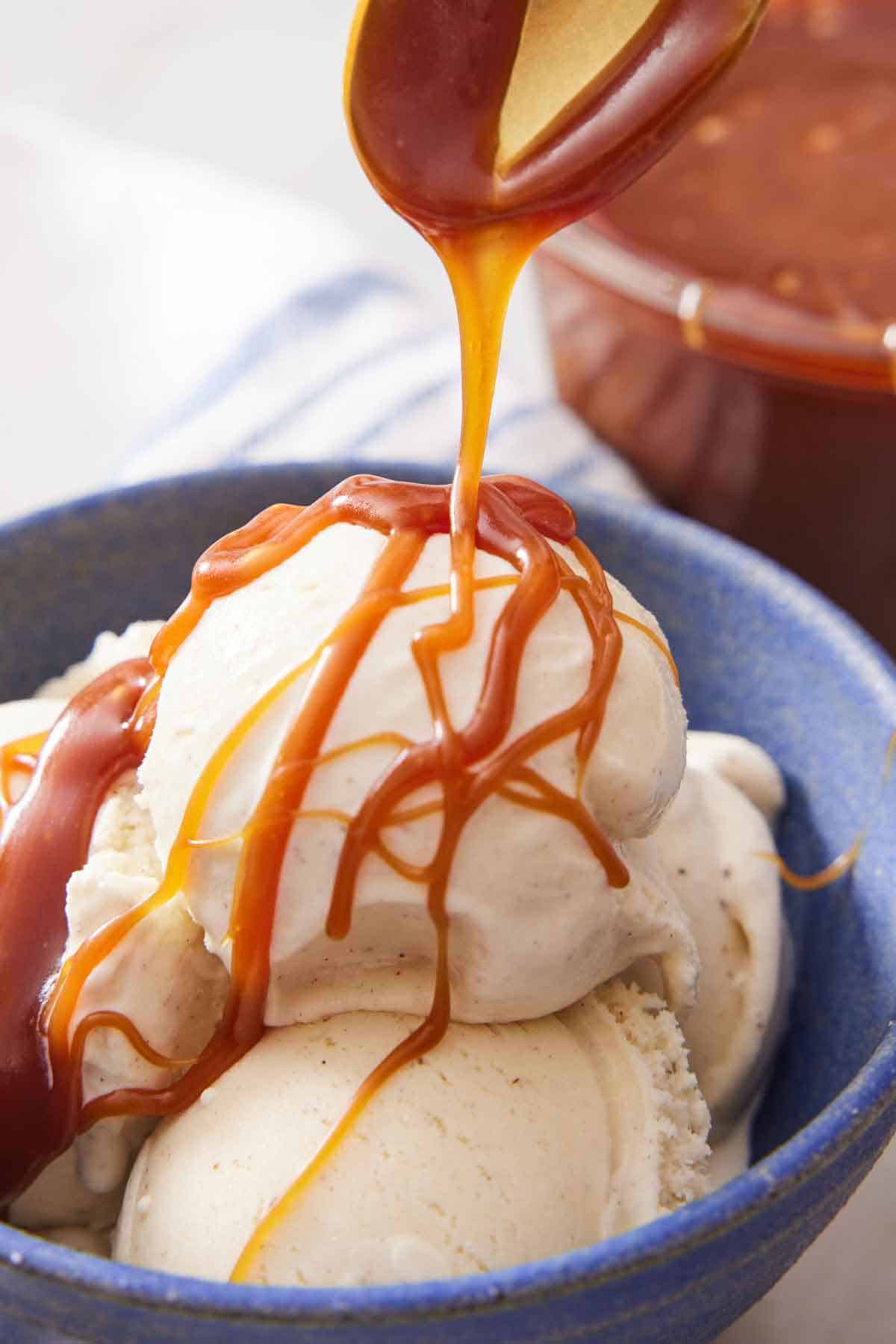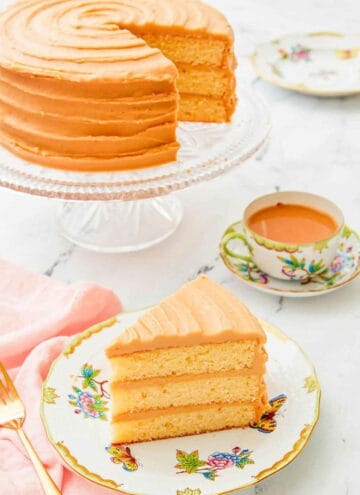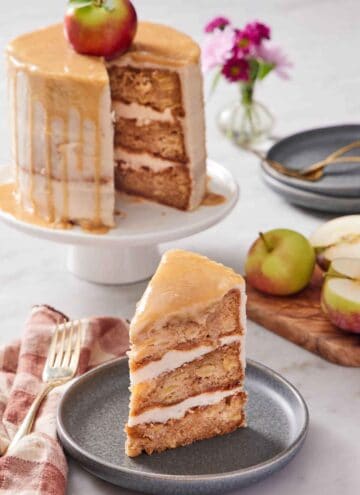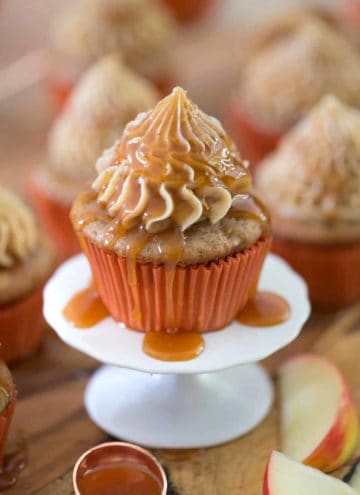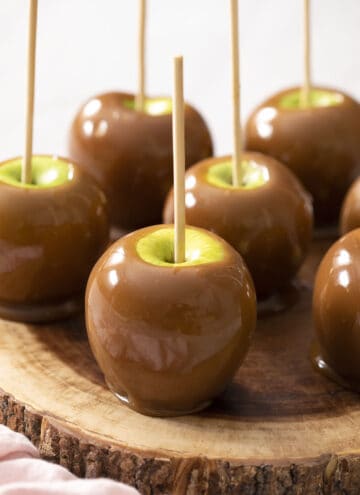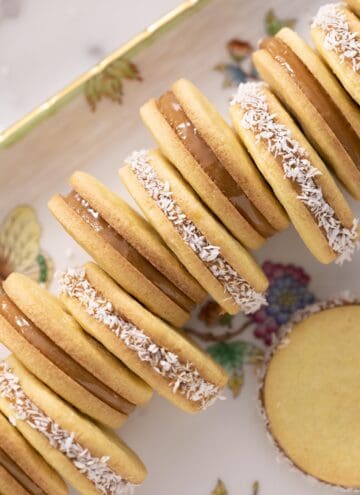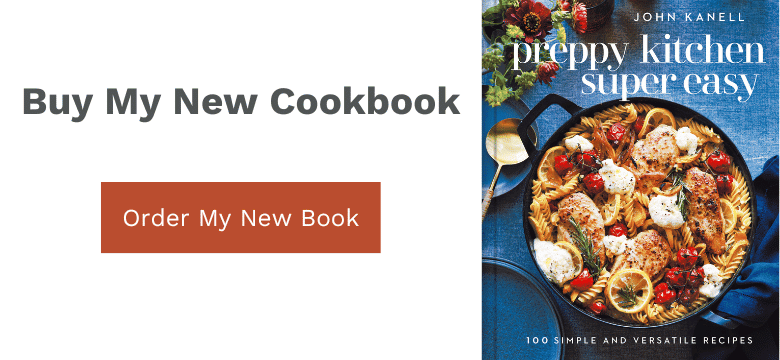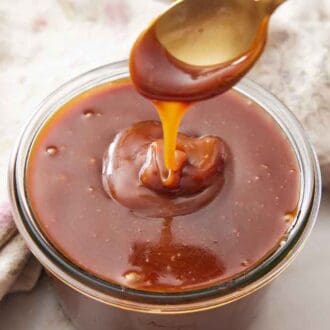You may think that a sauce this flavorful and iconic may be tricky to make. While there are a few tips to follow to ensure success, they are all easy to do, and I lay them out for you! Just read through the pro-tips section below and in less than 10 minutes, you’ll be wondering why you ever used the storebought variety, too! For more caramel recipes, check out my homemade caramel cake, easy caramel apples, and chewy caramel brownies.
What You Need to Make This Recipe
Sugar – opt for classic refined or granulated white sugar. Avoid using cane sugar, brown sugar, or coconut sugar, as they contain impurities or additional ingredients that can impede the caramelization process. Butter – choose unsalted butter for pure, rich flavor. Different brands of butter add different amounts of salt to their salted varieties, so you will have more control over the recipe when using unsalted butter. Cut the butter into ½-inch pieces and bring to room temperature before starting on the caramel. Heavy Cream – also known as heavy whipping cream, heavy cream adds richness, a lighter color, and a thicker viscosity to the caramel. Let the cream warm to room temperature before whisking it in. Salt – balances the flavor of the caramel and enhances the sweet flavor profile. Use fine sea salt for the best flavor. Sprinkle additional flaky salt or fleur de sel on the caramel when serving if desired to make homemade salted caramel sauce.
How to Make Caramel Sauce
- Add the sugar to a heavy-bottom medium saucepan with at least 3-quart capacity. Place over medium-high heat. Cook, stirring constantly, until the sugar melts and just starts to boil or for 3 to 5 minutes. (The sugar may start to turn light brown during this stage.)
- While bringing the sugar to a boil, brush the sides of the pan occasionally with a pastry brush dipped in water so sugar crystals do not form.
- Once boiling, do not stir, and continue boiling until the melted sugar turns a dark amber color, or for about 3 to 5 minutes. Give the sugar a good whisk and immediately remove the pan from the heat.
- Carefully whisk in the butter until melted and combined. The sugar will bubble vigorously when the butter is added so use caution.
- Once the butter is combined, slowly whisk in the heavy cream. Heed caution with this step as well as the mixture will bubble up again. Return the pot to medium heat and continue boiling for 1 minute or until a candy thermometer reaches 220°F. Depending on your stove, this could take up to 3 minutes.
- Remove the caramel sauce from the heat and stir in the salt. Allow the caramel sauce to cool in the pot for a few minutes, then transfer the hot caramel to a heat-proof bowl or glass mason jar and set aside to cool to room temperature before using. It will thicken as the caramel cools.
Pro Tips For Making This Recipe
Use a heavy-bottomed 3-quart or larger pot. A sturdy pot with a heavy bottom will allow the heat to conduct through the pan evenly, ensuring that the caramel doesn’t develop hot spots as it burns. If possible, use a light-colored pot as it will make it easier to evaluate when the caramel has reached the amber color. Finally, using a pot with high sides will prevent the caramel from bubbling up over the sides when whisking in the butter and cream. Warm the butter and cream to room temperature. Depending on the temperature of your kitchen, you will want to leave the butter and cream at room temperature for 1-2 hours before starting on the recipe. Or, run the butter in the microwave in 5-second intervals for 10 to 15 seconds, just until soft. Though the caramel bubbling up is inevitable, whisking in room temperature ingredients will help to minimize it. Brush the sugar crystals off of the pot. Sugar crystals are prone to stick to the sides of the pot as you bring the sugar to a boil. Brushing them off with a pastry brush dipped in water will prevent crystallization and a grainy caramel. If you do not have a pastry brush, you can also cook the caramel with a lid on it. The lid will catch the evaporating moisture, causing it to run down the sides of the pot and to clean off any sugar crystals. If cooking with the lid on, check the caramel regularly and reduce the temperature to medium-low heat if necessary. Use a candy thermometer. Cook the caramel to 220 degrees Fahrenheit after whisking in the butter and cream to get the best texture and flavor. Don’t walk away from the stove. Caramel can burn faster than you may think if you step away to make something else or check your phone. Pay close attention to the caramel throughout the cooking process, checking for the color of the sugar as it melts, sugar accumulating on the sides of the pot, and the mixture reaching the appropriate temperature. Because this recipe uses the dry method (meaning no water is added to the sugar), the cooking time is faster, so you must stay close. Flavor it! When stirring in the salt, add other flavorings to make your own caramel sauce flavored how you like. Some flavorings I like to add are 2 teaspoons of vanilla extract or vanilla bean paste, 2 tablespoons of liquor like amaretto, coffee liqueur, bourbon, or spiced rum, 1 teaspoon of ground cinnamon, or even a powdered dried herb like rosemary for a deeply delicious and slightly savory sauce. Thin out the sauce. Caramel sauce is thicker when it is cold, and thinner when it is warm, so think about the application. If you want a much thinner sauce to use cold, warm the sauce and add more cream to reach the desired consistency. For a thicker caramel to start, reduce the cream by up to 4 tablespoons.
If you’ve tried this easy caramel sauce recipe, then don’t forget to rate the recipe and let me know how you got on in the comments below, I love hearing from you!
